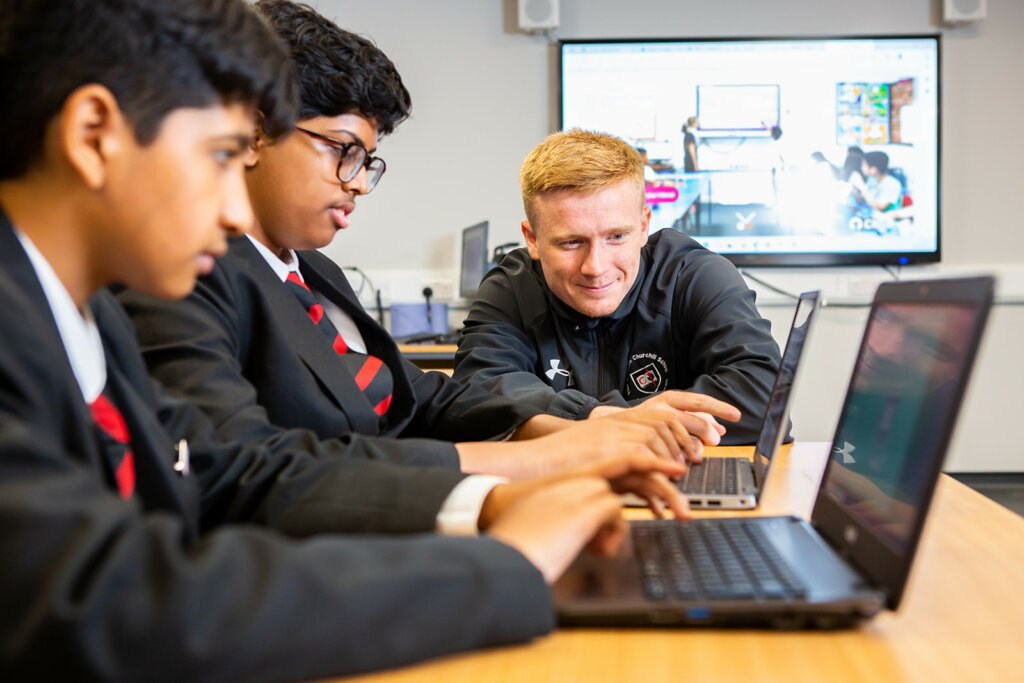Being a critical thinker doesn’t mean rejecting all the information you find. Instead, it means pausing, thinking twice and not accepting the things you see and hear online immediately and at face value.
What is critical thinking?
Young people should be reminded to think carefully about the information they are presented with. They should consider its source, compare it with what they already know to be true, ask questions, form judgements and check with others if they are unclear.
What are the issues?
Critical thinking includes a whole range of skills which are important when assessing the reliability of the information we come across online. Click on the examples below to learn more about some of the types of inaccurate or unreliable information which can be found online, and that critical thinking can help to address.
Appearing across almost all online platforms, from social media to games to web browsers, online advertising uses lots of different tactics to encourage clicks – including interactive games and puzzles, clickbait style headings, or tricky-to-spot sponsored content from social media celebrities and influencers. They all have the same purpose though – to encourage users to spend money.
This refers to eye-catching headlines or titles designed to get users’ attention and clicks, clickbait generally under-delivers on a user’s expectations. Articles or videos may be about a completely different topic to what the title suggested. Wording like “You won’t believe…” may be followed by predictable or sparse content.
Whilst not a new phenomenon, conspiracy theories have certainly found a bigger platform and susceptible audience online. Often spread unofficially through social media channels or online discussion forums, popular conspiracy theories implicate powerful people and organisations in secret plots supposedly behind real-world events.
Most famous for their use to create fake celebrity pornography videos, deepfake techniques use increasingly advanced methods to superimpose existing photos and videos over a different photo or video. This can result in surprisingly convincing footage of people or actions that never actually happened.
2017’s word of the year, “fake news” is a broad term which originally referred to false, often sensational information spread under the guise of news reporting. It’s increasingly accepted that ‘fake news’ is more of an umbrella term, and can refer to deliberate lies, partially untrue or biased stories, propaganda or even satire.
It’s no longer as simple as seeing is believing. Photo editing software is increasingly sophisticated and readily available. Whether looking at photos or videos on social media, or across other platforms, it’s important to consider the possibility that the image shown is not necessarily an accurate portrayal of reality.
Whether it’s a deliberately misleading sales listing, such as fake tickets, or an email trying to steal your login or bank details, scams and phishing attempts generally rely on online users submitting their details with the faith that they’ll get something in return. Sophisticated fraudsters and phishing attempts often rely on emails, webpages or messages which appear to be from trustworthy sources, making spotting fakes an important skill!
Top tips
Explore the internet together
Talk about what you come across online, asking questions like “What do you think about this?” or “Does that sound right to you?”
Consider the source
Where has the information come from? Do we have reason to trust it? Has it come from an expert or has it come from someone who has something to gain by getting us to believe it?
Consider prior knowledge
What do we already know about this subject? Does our knowledge match what we’re seeing online? Do we know enough to say whether it is reliable or not? Consider doing further research.
Take action against unreliable information
When you find something inaccurate, don’t spread it further. Instead, report it.
Trust your instincts but get help if you need it
If you think something doesn’t look right then trust your instincts and question it further. Remember there are plenty of people and places you can go to for help.
Conversation starters
- What do you enjoy looking at and learning about online?
- Where do you go to find information and what do you use it for?
- How do you decide if you can trust something online?
- What would you do if you saw someone sharing something fake or inaccurate?
- Who can help you if you see something that you’re not sure about?



